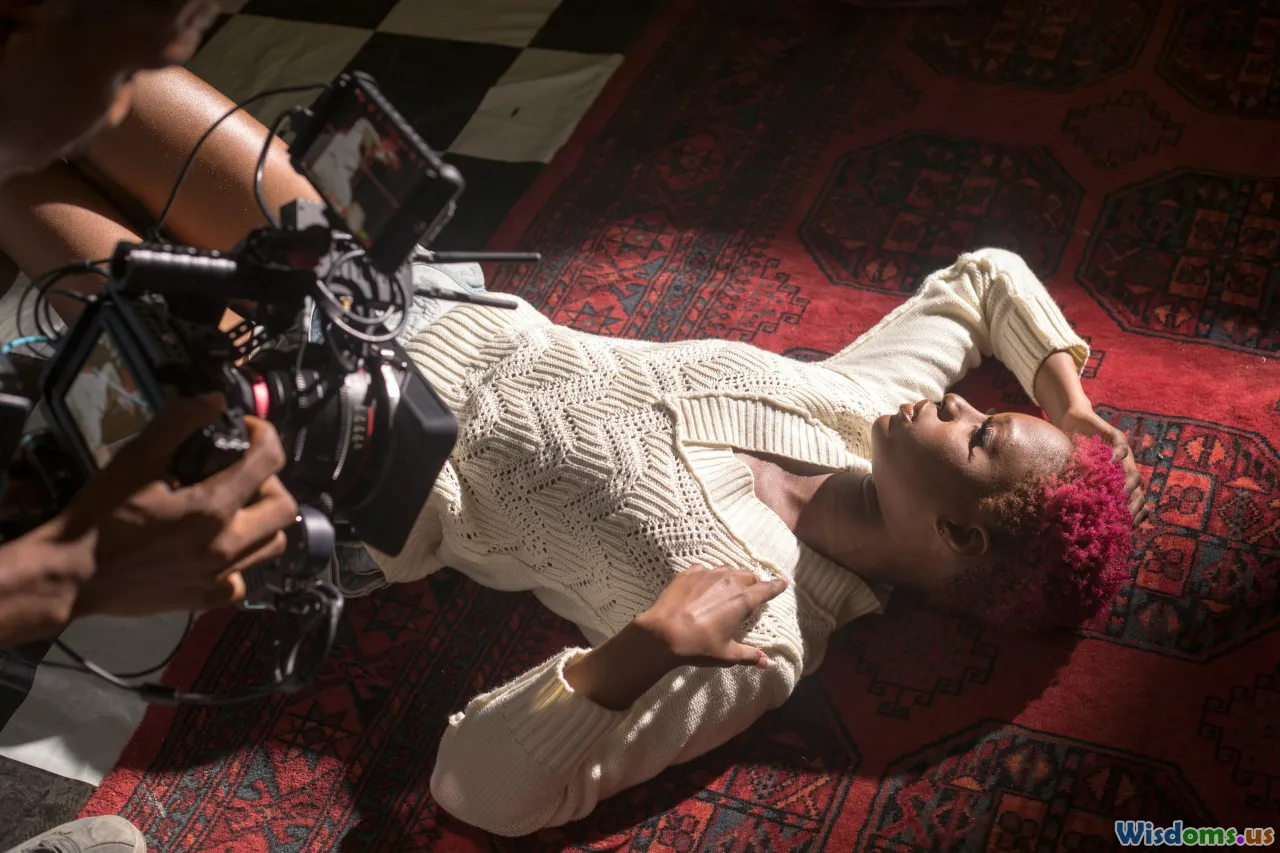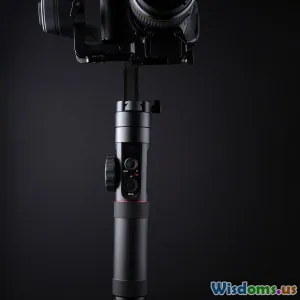
Seven Social Media Mistakes That Hurt Your Film Promotion
13 min read Discover seven common social media mistakes filmmakers make that can undermine your film promotion and learn effective solutions to boost your marketing strategy. (0 Reviews)
Seven Social Media Mistakes That Hurt Your Film Promotion
In today’s digital world, an effective social media campaign can catapult a film's success beyond local theaters and into international recognition. Yet, too many filmmakers fumble this opportunity, falling into common traps that hamper rather than help their promotional efforts. Whether you're working on a no-budget passion project or a festival competitor, avoiding these seven critical mistakes is key to connecting with audiences and maximizing your film’s impact.
1. Neglecting to Define Clear Goals

One of the gravest sins in social media promotion is launching campaigns without clearly defined objectives. It's surprising how often filmmakers pour energy into flashy trailers, behind-the-scenes stills, and celebrity Q&As—only to find their efforts disperse into the void with negligible fanfare or ticket sales.
Why Clear Goals Matter: Imagine crafting social posts without knowing if you’re aiming to build awareness, drive traffic to festival listings, or encourage paid VOD purchases. Without proper intent, even an eye-catching Instagram grid becomes just noise.
Take Netflix’s award campaigns: Each post, hashtag, and collaboration is carefully orchestrated around reaching Oscar voters, indie cinephiles, or international markets. Consider what you want to achieve:
- Raising general awareness (likes, follows, impressions)
- Building an email list for crowdfunding or premiere alerts
- Driving event attendance
- Boosting sales on digital platforms
How to Get It Right: Start every campaign with SMART goals—Specific, Measurable, Achievable, Relevant, and Time-bound. Example: “Grow our film’s Instagram to 2,000 followers by release week,” or “Reach 1,000 trailer views and generate 100 ticket pre-sales before the premiere.”
Actionable Tip: Use pinned posts and stories to hammer home your main call-to-action, and regularly check analytics to see what’s working.
2. Posting Inconsistently or Too Infrequently

A piecemeal approach—posting a burst of content around your teaser drop, then disappearing for weeks—kills momentum and audience interest. Social media thrives on rhythm and reliability; neglecting your accounts for too long tells audiences your project has stalled, even if production continues behind the scenes.
Case in Point: During the runup to "Everything Everywhere All At Once," the filmmakers and cast steadily released images, interviews, and user-generated reactions, maintaining a steady stream from pre-launch to awards season. Contrast this with indie films whose feeds go cold after crowdfunding ends.
The Solution: Develop a content calendar weeks ahead. Plan for:
- Trailer drops
- Poster reveals
- Cast takeovers
- Countdown to festival premieres
- Watch parties or Q&A sessions post-launch
Don’t Overcommit: It’s better to post three times weekly with quality content than spam daily with forgettable updates.
Useful Tool: Platforms like Buffer or Later can help schedule posts, maintain consistency, and adapt frequency based on analytics.
3. Forgetting to Engage with the Community

A common mistake among filmmakers is treating social platforms as announcement boards instead of communities. Fans hunger for acknowledgment, insider glimpses, and chances to contribute—yet many film accounts simply broadcast, rarely listening or responding.
Missed Opportunity: "The Blair Witch Project" became a viral phenomenon not just from mysterious trailers but from filmmakers engaging with the online horror community, fueling rumors and fan theories. Today’s audiences are even more interactive—they create memes, fan art, and reviews.
Practical Strategies:
- Reply promptly to comments and questions.
- Share fan art or reviews, tagging original creators.
- Host contests (“Best cosplay” or “Caption this scene”) with small incentives.
- Run Instagram Stories Q&A sessions with cast and crew.
Engagement builds loyal advocates. The excitement of being recognized by a film’s creators can transform passive viewers into evangelists who spread the word organically.
4. Ignoring Platform-Specific Content Strategies

Treating Facebook, Twitter/X, Instagram, and TikTok as identical outlets is a shortcut to mediocre results. Each platform favors unique content types, styles, and user demographics.
Example Misstep: Uploading a movie poster across every channel without adaptation. Posters that shine on Instagram may look cluttered on TikTok or lack context on Twitter.
Effective Tactics:
- Instagram: Leverage Carousel posts for multiple stills, teasers, and behind-the-scenes slides. Reel vertical videos for interviews or spotlighting crew members.
- TikTok: Fun, snappy behind-the-scenes clips, production diary snippets, or even playful skits related to the film’s theme.
- Twitter/X: Real-time updates, threaded production stories, witty one-liners, memes, and live-tweeting during screenings.
- Facebook: Longer posts, community group creation, event RSVPs, and detailed updates.
Real-World Example: Pixar utilized TikTok to reveal animation tricks and voice actor reactions during "Luca’s" launch, running concurrent Twitter threads of director interviews for an older demographic.
Tip: Regularly study what competitor films post by platform, and tailor your strategy accordingly.
5. Overselling and Spamming Your Audience

Promoting your film is crucial—but relentless self-promotion turns off even ardent fans. Urging people to “Buy tickets now!” with every post feels pushy, diluting the special moments you want to celebrate.
Where Indie Films Stumble: Accounts that only share links to ticketing sites or streampages and ignore storytelling. Audiences quickly unfollow when their feeds fill with overbearing sales pitches.
Balanced Approach:
- Mix behind-the-scenes moments, crew shout-outs, and fan stories with promotional content.
- Leverage storytelling: share challenges faced, location scouting anecdotes, or a heartfelt crew memory.
- Save direct sales prompts for key moments—launch days, festival announcements, or final call reminders—and sandwich them between more personal updates.
A marketing rule of thumb: Out of every five posts, dedicate no more than one or two to direct calls-to-action; make the rest “value” content.
Effective Example: Marvel’s feed showcases rarely seen concept art, actor routines, trivia, and the occasional playful roast between actors, ensuring fans feel included, not targeted.
6. Overlooking the Power of Paid Social & Influencer Collaborations

Relying solely on organic reach is increasingly risky as social algorithms throttle visibility. Yet some filmmakers ignore collaborative promotion or microscaled ads, believing it’s too "Hollywood." In reality, even modest budgets can yield outsized visibility if spent wisely.
Missed Advantage: During the release of "Parasite," targeted Facebook ads in multiple languages and influencer partnerships with international critics elevated the film’s presence beyond South Korea, reaching cineastes worldwide.
Influencer Partnerships (even micro-influencers with 2–10k followers) introduce your film to niche audiences for a fraction of what traditional PR costs.
How to Harness Paid Promotion Effectively:
- Set clear objectives (e.g., trailer views, festival RSVPs, merchandise sales).
- Select relevant hashtags, interests, and locations—geotargeting boosts turnout at event screenings.
- Choose influencers who genuinely connect with your genre—comedy reviewers for a rom-com, or horror vloggers for your thriller.
- Offer genuine value: free screening access, early promos, or co-hosted Q&As.
- Constantly review analytics and tweak budget or creative accordingly.
Pro Tip: Even a $50-$100 spend can make a trailer go from 500 views to 10,000+ if targeted precisely.
7. Failing to Measure and Adjust Campaigns

Many filmmakers set up accounts and post diligently, but fail to check whether their strategies are actually working. Without regular measurement and optimization, you’re wasting time—and missing critical learning opportunities.
Real-World Impact: Suppose you’ve invested in Facebook ads and see decent traffic, but not many “Buy” conversions. Is your landing page failing? Are your calls to action unclear? Or is your message resonating with the wrong demographic? Only in-depth analysis will tell.
Key Metrics to Track:
- Engagement: likes, saves, shares, comments
- Growth: followers, newsletter sign-ups, DMs
- Conversions: ticket sales, crowdfunding backers, VOD/stream purchases
- Reach: impressions, virality (how often your post is reshared)
Best Practices:
- Use each platform’s built-in analytics.
- Compare post types and timing—spot which content actually moves the needle and at what time audiences are most active.
- A/B test visuals and messaging: Run two versions of a post simultaneously to see which performs best.
- Regularly tweak your strategy based on what’s working, not just what you like.
Industry Example: In the Academy Awards campaigning season, teams constantly update creative, messaging, and audience targets based on ongoing feedback from social listening tools.
Elevate Your Next Film’s Social Media Campaign

Avoiding these seven mistakes doesn’t require massive Hollywood-sized budgets—just clarity, dedication, and a willingness to engage authentically. Film promotion has always revolved around word-of-mouth; in the digital era, that means maximizing the reach and depth of your story with a strategic, interactive, and adaptive social media campaign.
By thoughtfully defining goals, staying consistent, truly engaging with communities, embracing platform-specific tactics, keeping self-promotion in check, using paid tools smartly, and measuring everything you do, you’ll amplify your film—not just online, but in the collective imagination of audiences everywhere.
Rate the Post
User Reviews
Other posts in Film Marketing & Distribution
Popular Posts















